Friday Night Gaze #1 - What to see on the nightsky in June 2017
Welcome to the first round in a row of astronomical contributions!
Even though it´s already Saturday in most parts of the world, the name of the astronomical series here on Steem will be "Friday Night Gaze" - and in the future it will appear once a week on Friday. Today we´ll learn how to orientate oneself on the night sky and we´ll find out what constellations and planets appear during the night.
Because the Earth is a globe the following information is only true for the ~ 50th degree of latitude [+/- 5°]
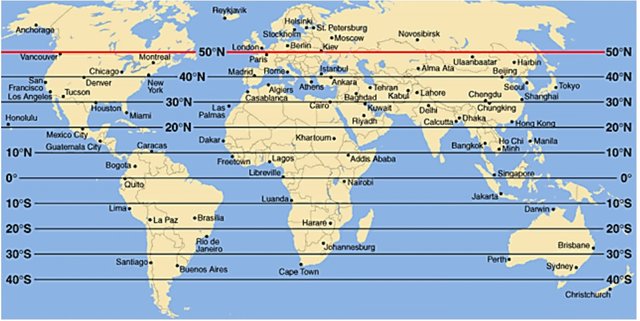
Other latitudes on the northern hemisphere can see pretty much the same, but won´t have the exact same distances above the horizon. The further you to north or south from the 50th degree of latitude the more the angles will change. Please keep this in mind.
Having clarified this we can now turn the lights off.
Moment of silence.
If we want to explore the night sky, it´s useful to get an idea where the cardinal directions are. On the northern hemisphere we are kinda blessed, because we have the polar star, and therefor we can easily determine direction North.
In order to find the polar star we need the big dipper, which is widely known among general public, and prolong the first 2 stars "upwards". Prolonging the distance between those 2 stars for about 5 times we get directly to the polar star, and it looks like this.
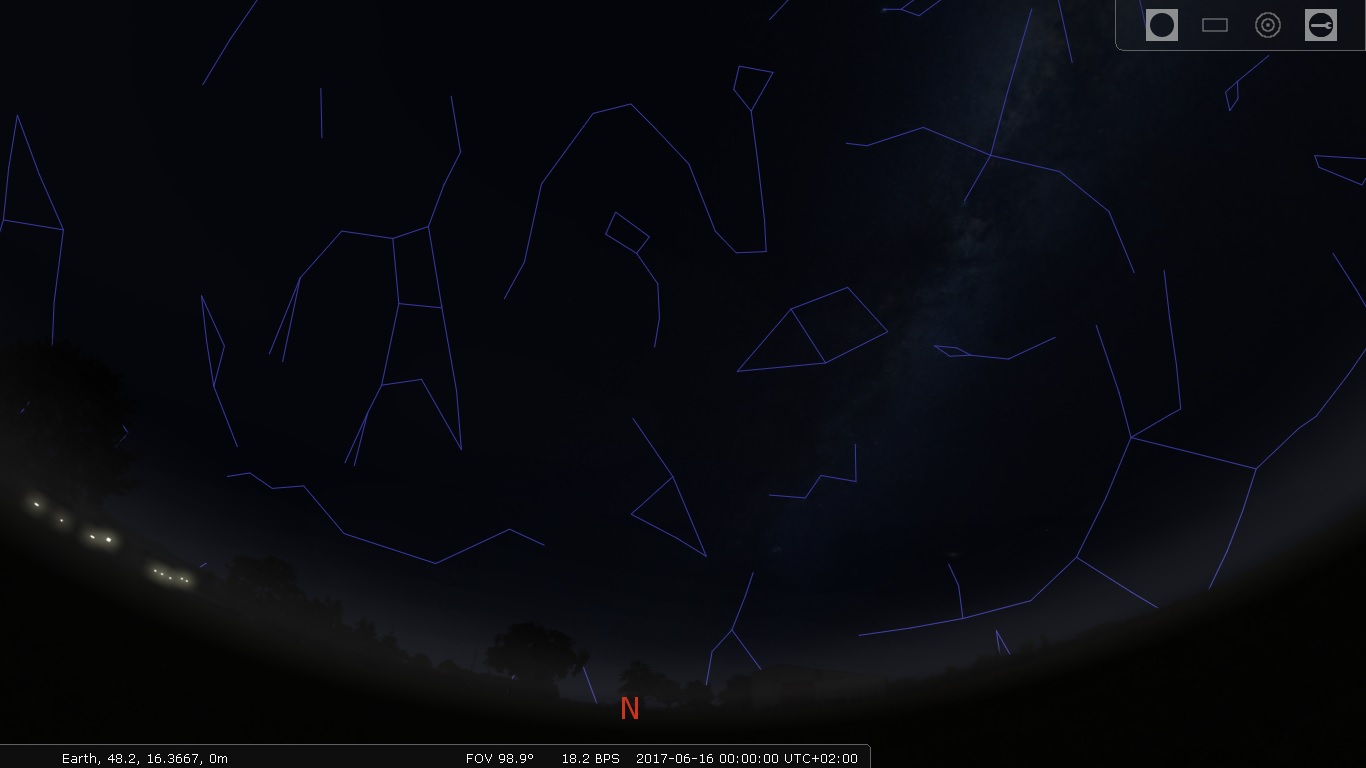
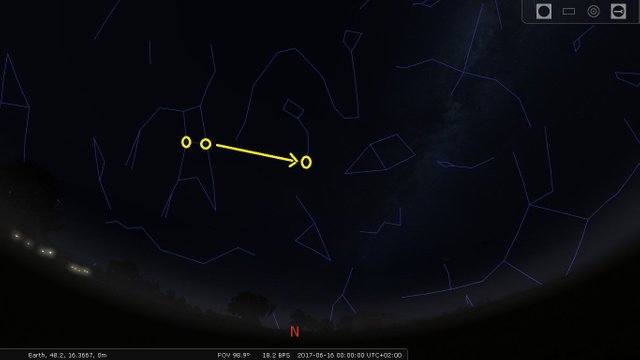
Having found the polar star, we can then draw a straight line from the polar star down to the horizon, and there we have appointed direction North.
Side note: please note, that the big dipper is only a asterism, and therefor is only a part of a larger constellation known as the Great Bear [Ursa Major]
Having found the cardinal direction North, we can now turn our back to it and look into direction South.
Living in the northern hemisphere we observe the sky by looking into direction South, because that´s where the action is going on - where the sky is changing during the night - where planets, constellations and the moon are passing by after they ascended in the East and before they are going to descend in the West.
Let´s have a look at what we can see mid June at midnight while looking into direction South.
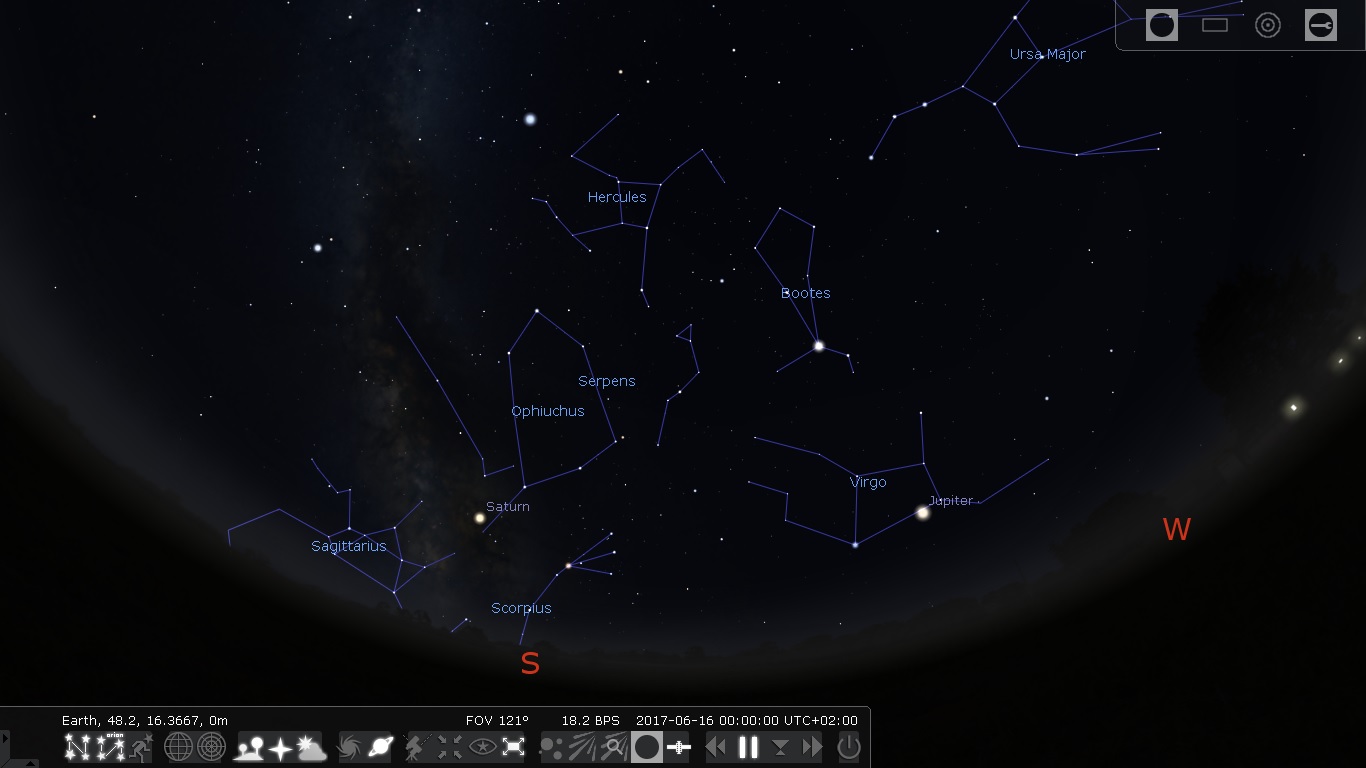
That´s a bunch of constellations, but there are also 2 planets, one of them is Jupiter, the other one is Saturn.
Jupiter is already visible shortly after the Sun sets, because it is one of the brightest objects in the night sky.
If you want the ranking it´s:
- Moon
- Venus
- Jupiter
For finding the cardinal direction North we used 2 stars of the Great Bear, ... now we´ll use some other stars to start our star hopping ... let´s have a look ... we can find 2 constellations with this method, namely "Bootes" and "Virgo", or even more precise, we do find the 2 main stars of those constellations "Arctur" and "Spica"
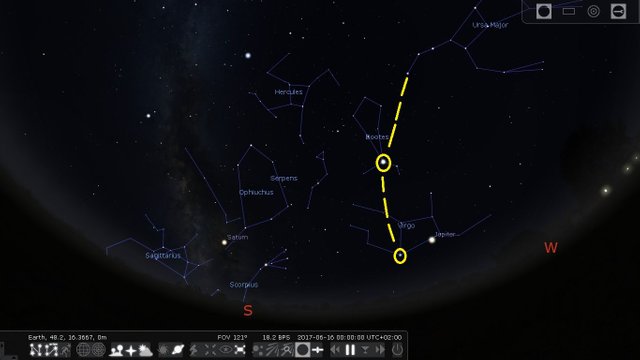
Very close to those 2 constellations are "Serpens" and "Ophiuchus", one of my favorite constellations :)
The last to be mentioned is "Hercules" which can be found just a little bit above "Bootes"
Now if it´s dark outside while you are reading this, and you take a look out of your window, you will also see the Moon, very close to Jupiter - but this is only true for today 3rd of June, 22:30 CEST - because the Moon is the fastest object on the night sky, and the pictures above was set at the time 16th of June midnight.
Even tomorrow night the Moon will have made a small jump away from Jupiter. We´ll talk about the movement of the sky and about the movement of the planets and the Moon next time.
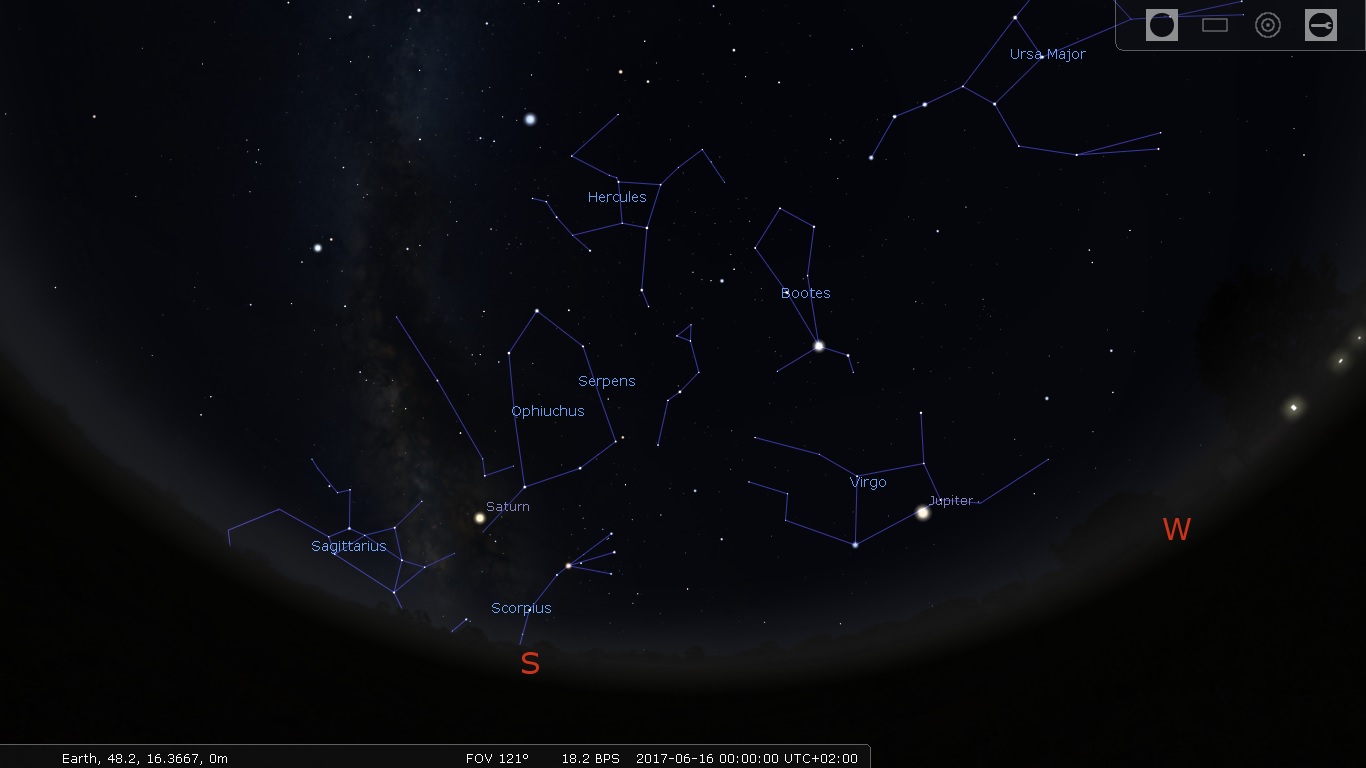
For today I leave with this amount information.
I hope you liked the reading. Please leave me feedback, as this is my first "professional" entry on Steem!
Feel free to follow me and resteem!
I´m wishing you clear skies! See you next Friday!
Lucas
PS: The program used for visualization is called Stellarium, it´s a freeware and can be found here stellarium.org
PPS: If you got a binocular or telescope at home, try pointing it at the Moon, Jupiter and Saturn --> great views!
Really nice article @flurgx I liked that you explain this topic as simple and visualised as you can, which is really good to understand (:
Thank you, I appreciate your feedback!
that so interesting.. and in the same time I'm pretty sure if I will try to find them I will fail! But I promise I will try to look in to the sky and use your knowledge! Thanks for sharing! :)
I´m super glad you like it! And I can recommend to download the Stellarium software, it´s free and it´s a great help in recognizing constellations, finding planets and stuff! But Jupiter is really easy, it´s SO bright! Good luck
Great article thanks lot!
Hi! Have you heard about @krwhale? It is similiar with @randowhale. For your information please click on.